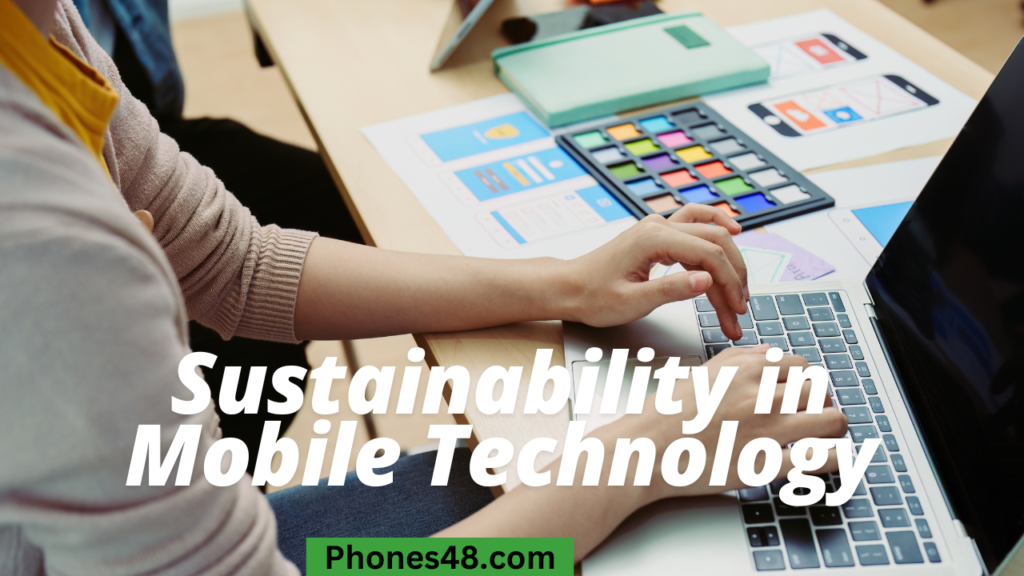Introduction of Exploring the Future of Mobile Phones: AI, Foldables, and Beyond
Mobile phones have come a long way from the bulky devices of the 1980s to the sleek, multifunctional gadgets we carry today. Each decade brings groundbreaking innovations that redefine how we interact with technology and each other. Today, we stand at the cusp of a transformative era, driven by advancements in artificial intelligence (AI) and foldable phones, with even more exciting possibilities on the horizon.
But what makes these technologies so revolutionary? AI is making our devices smarter, more efficient, and deeply personalized, while foldable technology is redefining what we thought was possible in terms of portability and multitasking. Beyond these, concepts like augmented reality, holography, and even brain-computer interfaces are inching closer to reality. This article takes an in-depth look at the future of mobile phones, dissecting these trends and exploring their potential to change our lives.
The Role of Artificial Intelligence in Mobile Phones
AI in Photography and Image Processing
Have you ever noticed how your phone camera instantly adjusts to low light or blurs the background perfectly for a portrait shot? That’s AI at work. Today’s smartphones use AI-powered algorithms to enhance photography like never before. Cameras can now identify objects, optimize settings for different lighting conditions, and even recommend framing options. AI also enables real-time effects like augmented reality overlays and ensures that every photo you take looks professional, regardless of your skill level.
AI-Driven Personal Assistants
AI isn’t just about taking better pictures—it’s about making your life easier. Virtual assistants like Google Assistant, Siri, and Alexa are becoming smarter, thanks to AI advancements. These assistants can understand context better, remember preferences, and even anticipate your needs. For example, your phone might suggest leaving early for a meeting based on traffic conditions or remind you to pack an umbrella if rain is forecasted. With growing integration into IoT ecosystems, these assistants are turning smartphones into control hubs for your home and work.
AI in Battery Management
Nothing frustrates us more than running out of battery at a critical moment. AI is addressing this by learning user behavior and optimizing power usage. It can shut down background apps you don’t use frequently or limit energy-hogging processes when your battery is low. Some advanced phones even offer adaptive charging, where the device adjusts charging speed to prolong battery health.
Foldable Phones: Redefining Portability

Evolution of Foldable Screens
Foldable phones were once the stuff of science fiction, but they’ve rapidly moved from concept to commercial reality. Early prototypes were clunky and fragile, but today’s foldable screens, powered by innovations in flexible OLED technology, are sleek and durable. Devices like the Samsung Galaxy Z Fold and Huawei Mate X have shown that foldables can combine portability with functionality, offering a tablet-like experience in a pocket-sized device.
Advantages of Foldable Devices
Why settle for one screen size when you can have two? Foldable phones let you enjoy the best of both worlds. Unfold them for an immersive experience, perfect for watching movies or multitasking, and fold them back to fit snugly in your pocket. This flexibility is particularly appealing to professionals and gamers who need larger screens but don’t want to carry multiple devices.
Challenges Facing Foldable Phones
While foldable phones are exciting, they come with their own set of challenges. Durability remains a concern—flexible screens are more prone to wear and tear, and the folding mechanism can degrade over time. Moreover, these devices are often priced at a premium, making them inaccessible to many consumers. As technology matures, however, we can expect better durability and more affordable options.
5G Technology: The Backbone of Future Mobile Innovations

SeeThis Also
What to Do If Your Phone Gets Wet Step-by-Step Recovery Guide
How to Troubleshoot Common Mobile Phone Issues
Gaming on a Budget Affordable Smartphones for Gamers
Mobile Display Technologies: AMOLED, LCD, and OLED Explained
The Speed Revolution
If you think your current phone is fast, wait until you experience 5G. This next-generation wireless technology offers blazing-fast download speeds, making it possible to stream 4K videos, download entire movies in seconds, and enjoy lag-free gaming. The reduced latency of 5G networks also supports real-time applications like augmented reality gaming and virtual meetings.
Enhanced Connectivity with 5G
5G isn’t just about speed; it’s about connecting more devices than ever before. It plays a pivotal role in the Internet of Things (IoT), enabling smart cities, connected cars, and remote healthcare systems. Imagine your phone communicating seamlessly with your smart fridge, thermostat, and even traffic lights, all in real-time. That’s the future 5G is building.
Augmented and Virtual Reality Integration
AR and VR in Entertainment
Augmented reality (AR) and virtual reality (VR) are set to revolutionize how we consume entertainment. From immersive gaming experiences to virtual concerts, AR and VR are pushing boundaries. Social media platforms are already incorporating AR features, allowing users to try on virtual clothes or see how furniture fits in their homes.
Practical Applications of AR/VR
Beyond entertainment, AR and VR have practical applications in education and retail. Imagine exploring ancient ruins in a history class through VR or trying out a new hairstyle virtually before heading to the salon. These technologies are making experiences more interactive and personalized.
Sustainability in Mobile Technology

Eco-Friendly Manufacturing
As concerns about e-waste grow, smartphone manufacturers are turning to eco-friendly practices. Companies are using recycled materials and adopting energy-efficient manufacturing processes to reduce their environmental impact. Some even offer trade-in programs, encouraging users to recycle their old phones responsibly.
Modular Designs
The idea of modular phones is gaining traction. These devices allow users to replace specific components—like the camera or battery—instead of buying an entirely new phone. This not only reduces e-waste but also makes smartphones more customizable and repair-friendly.
Biometric Security Enhancements
Advances in Facial Recognition
Security is a top priority for smartphone users, and biometric authentication is leading the way. AI-driven facial recognition systems are becoming faster and more accurate, making it harder for unauthorized users to access your phone. These systems can even detect subtle differences between identical twins.
Future of Biometric Authentication

Under-display fingerprint sensors and voice recognition are also evolving. Multi-modal biometric systems, which combine several methods of authentication, promise to make our devices more secure without compromising convenience.
Conclusion
Smartphones are no longer just gadgets; they’re gateways to the future. From AI-powered personalization to foldable designs that redefine usability, the innovations we’re witnessing today are shaping a world where technology seamlessly integrates with our lives. Add to that the possibilities of 5G, AR/VR, and sustainable practices, and it’s clear that mobile phones are set to play an even more vital role in the years to come.
As these technologies mature, the line between science fiction and reality continues to blur, bringing us closer to a world where our phones aren’t just tools but extensions of ourselves.
FAQs
- What are the main benefits of AI in smartphones?
AI enhances photography, improves battery management, and powers virtual assistants for a more personalized user experience. - How durable are foldable phones compared to traditional models?
While foldables have improved in durability, they still face challenges like wear on hinges and screens. Manufacturers are continuously innovating to address these issues. - What makes 5G critical for future smartphone capabilities?
5G’s speed, low latency, and ability to connect multiple devices make it essential for emerging technologies like AR, VR, and IoT. - Are there any phones with holographic displays available today?
Holographic displays are still in the experimental phase, but several companies are exploring this technology for future devices. - How is sustainability being prioritized in the mobile industry?
Brands are adopting recycled materials, modular designs, and trade-in programs to reduce environmental impact and promote sustainability.






Pingback: How Mobile Phones Are Shaping the Future of Communication - phones48.com
Pingback: Must-Have Mobile Phone Accessories for 2024 - phones48.com